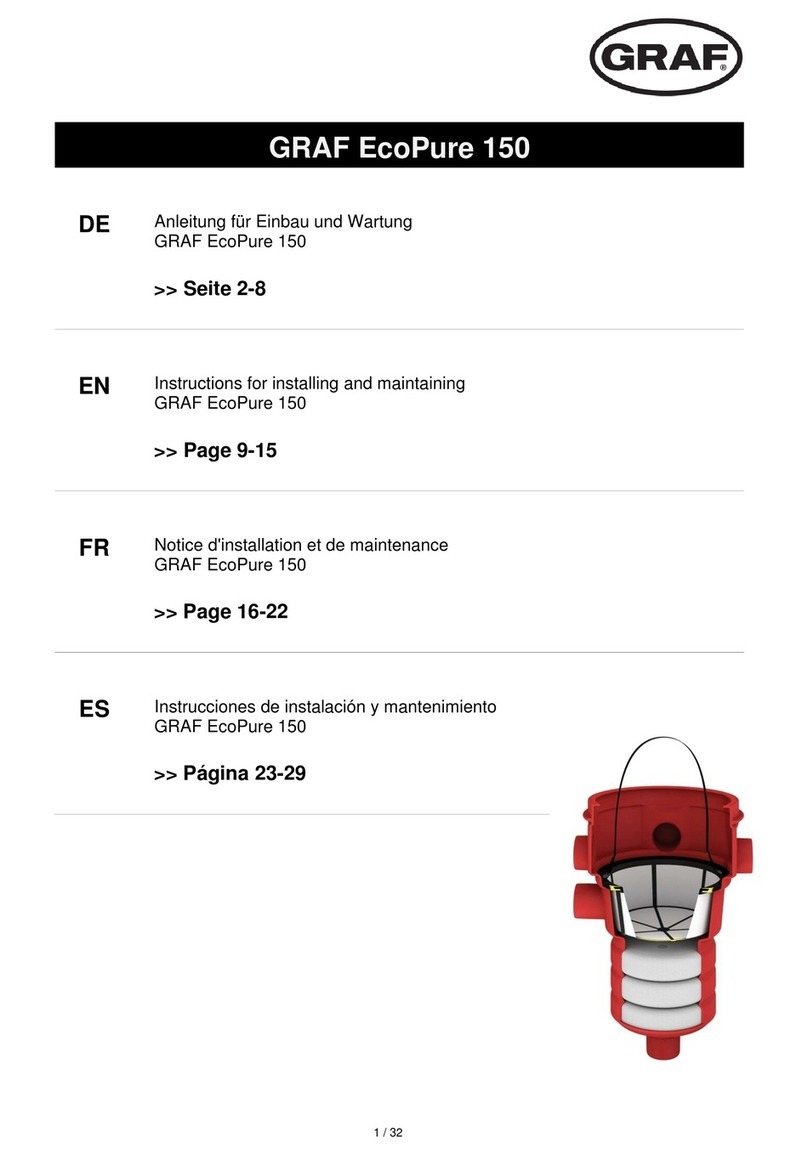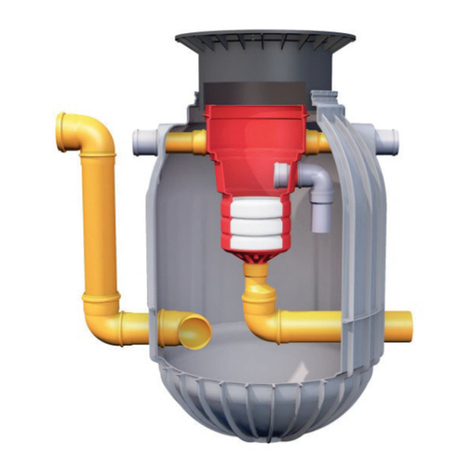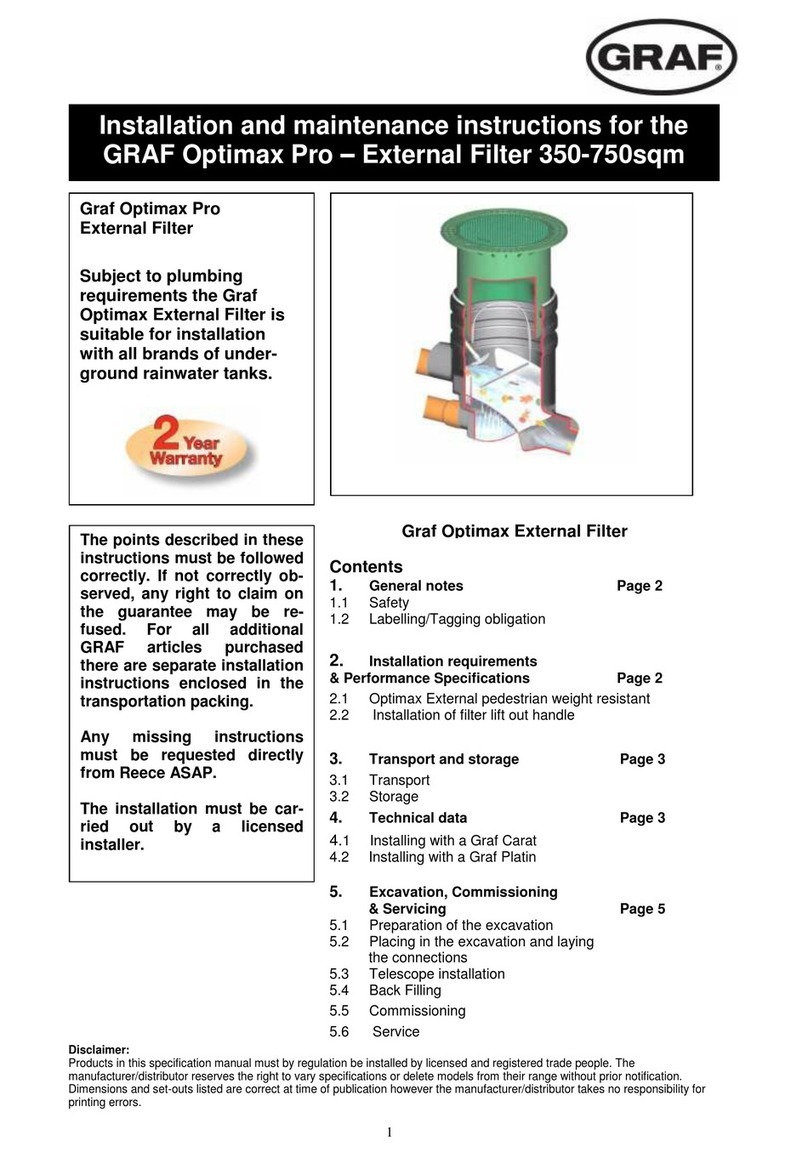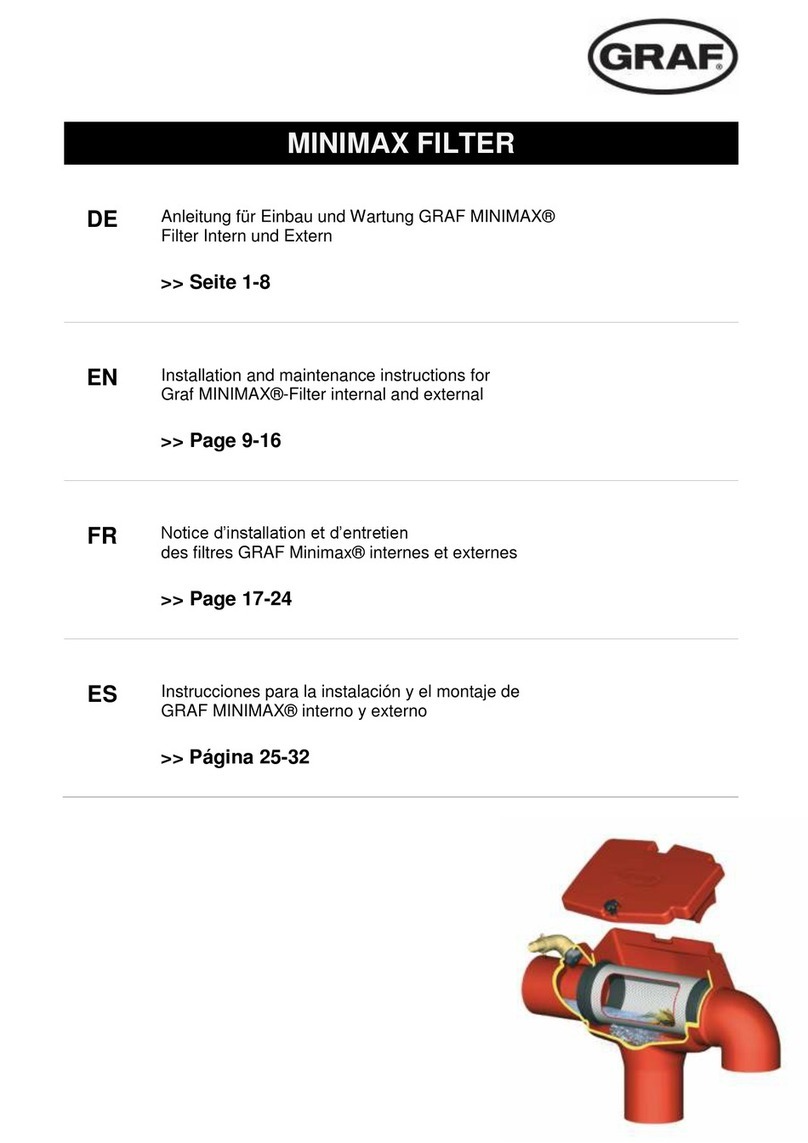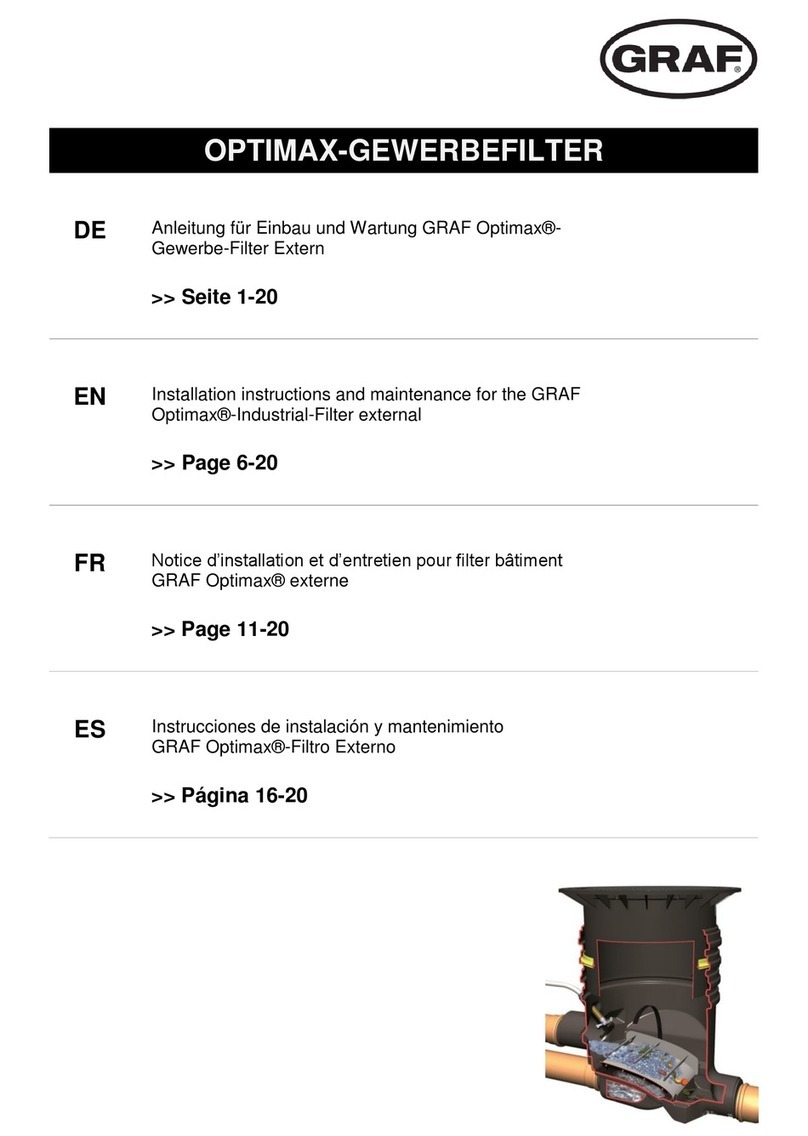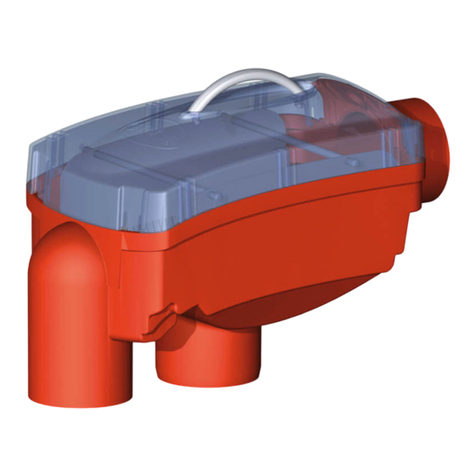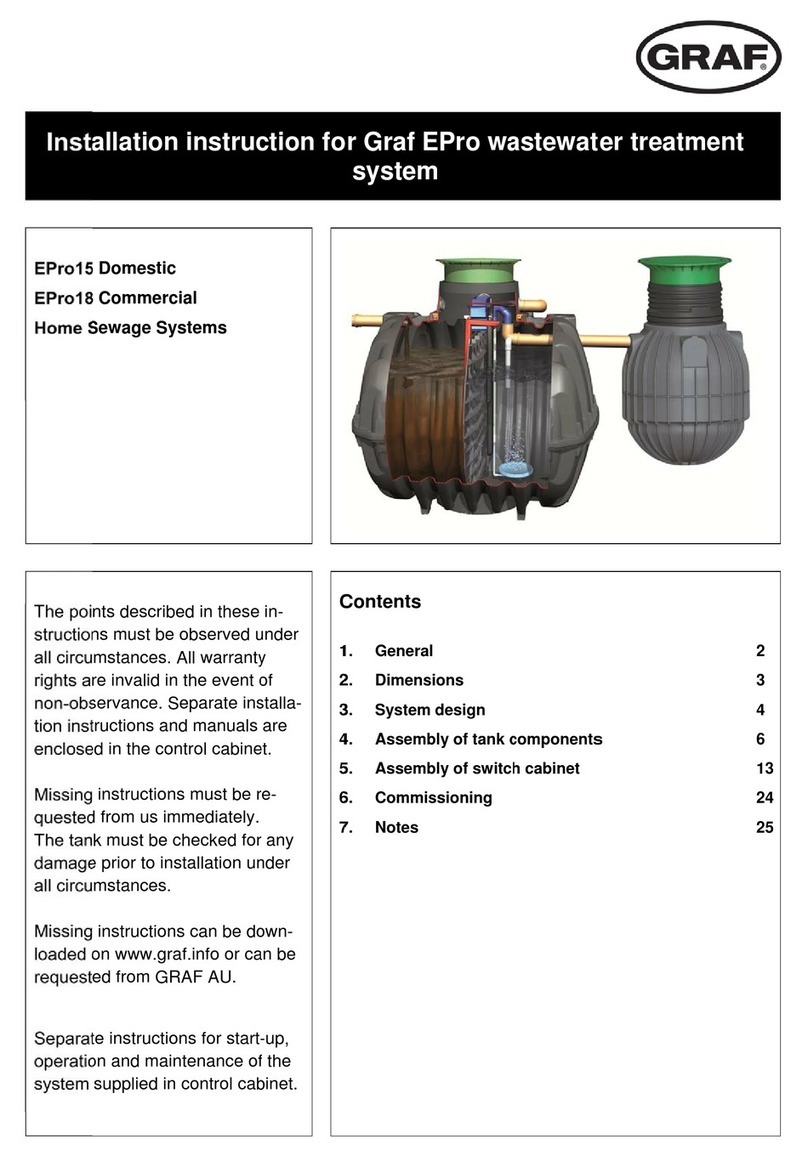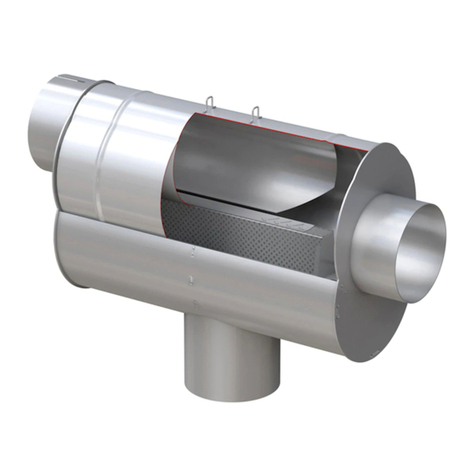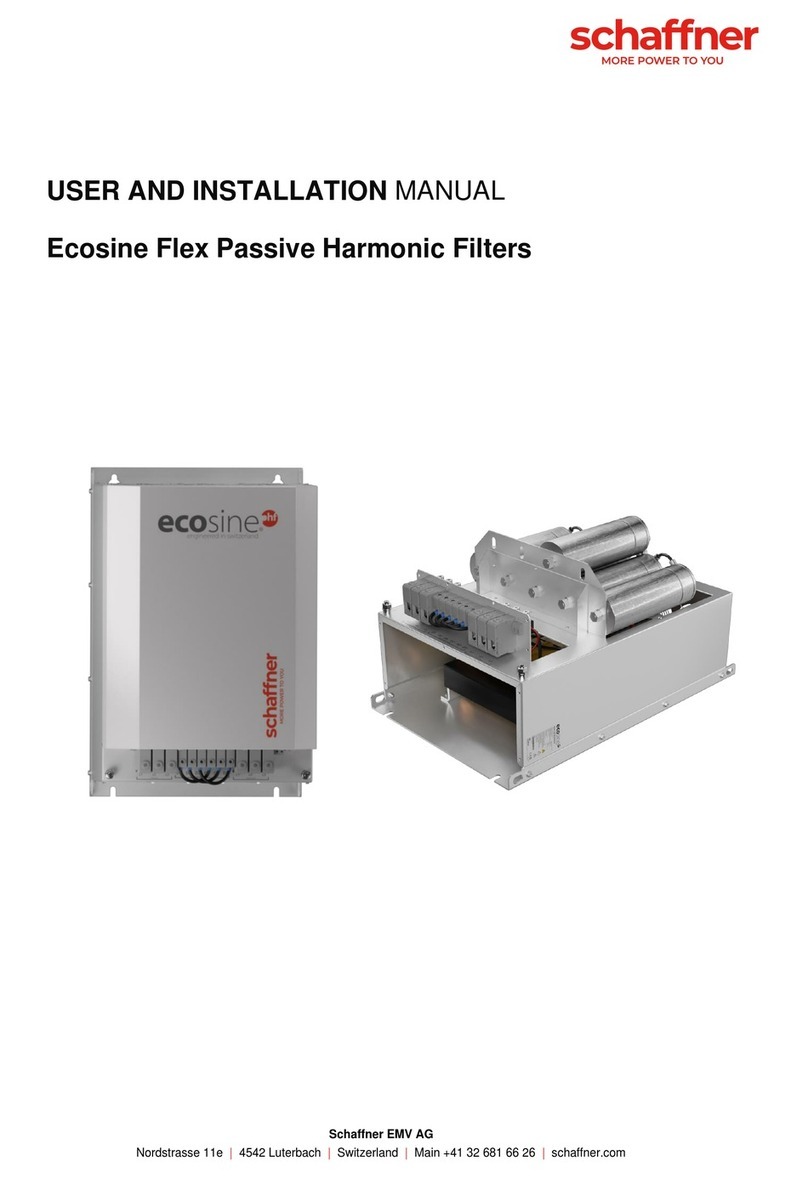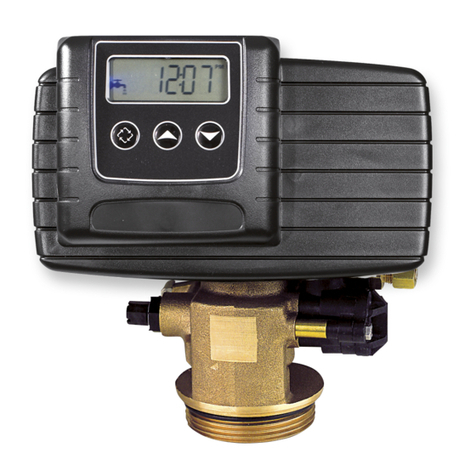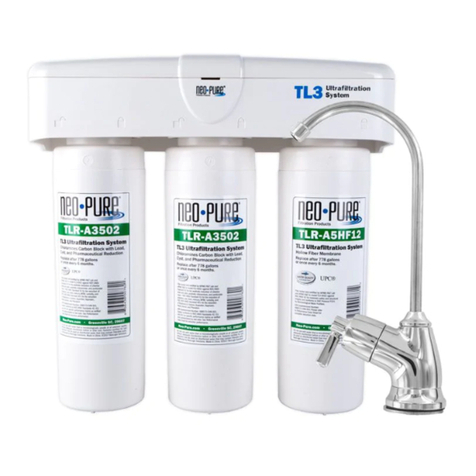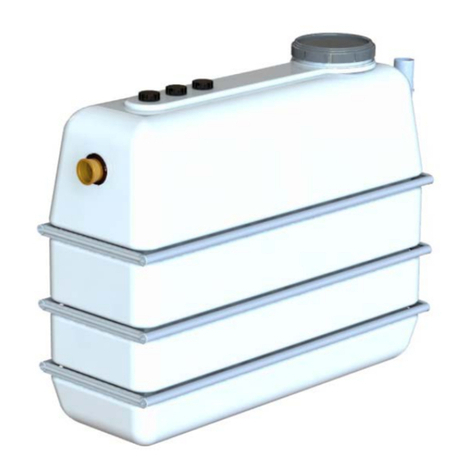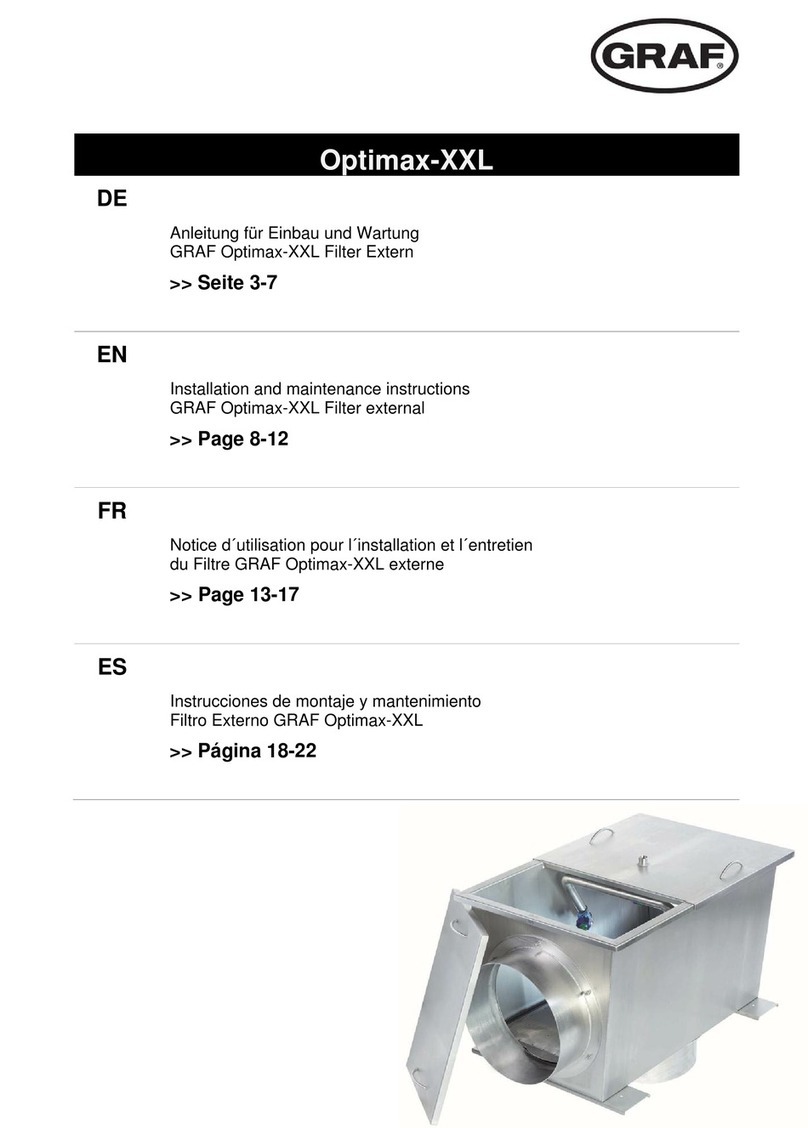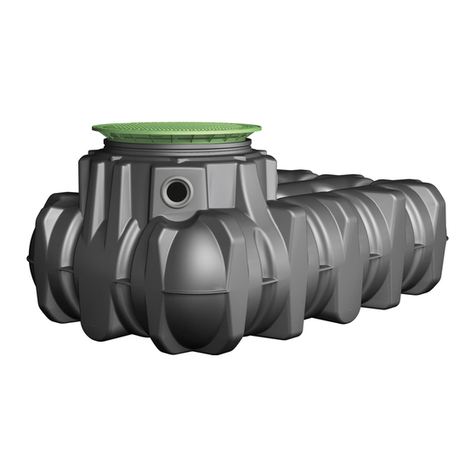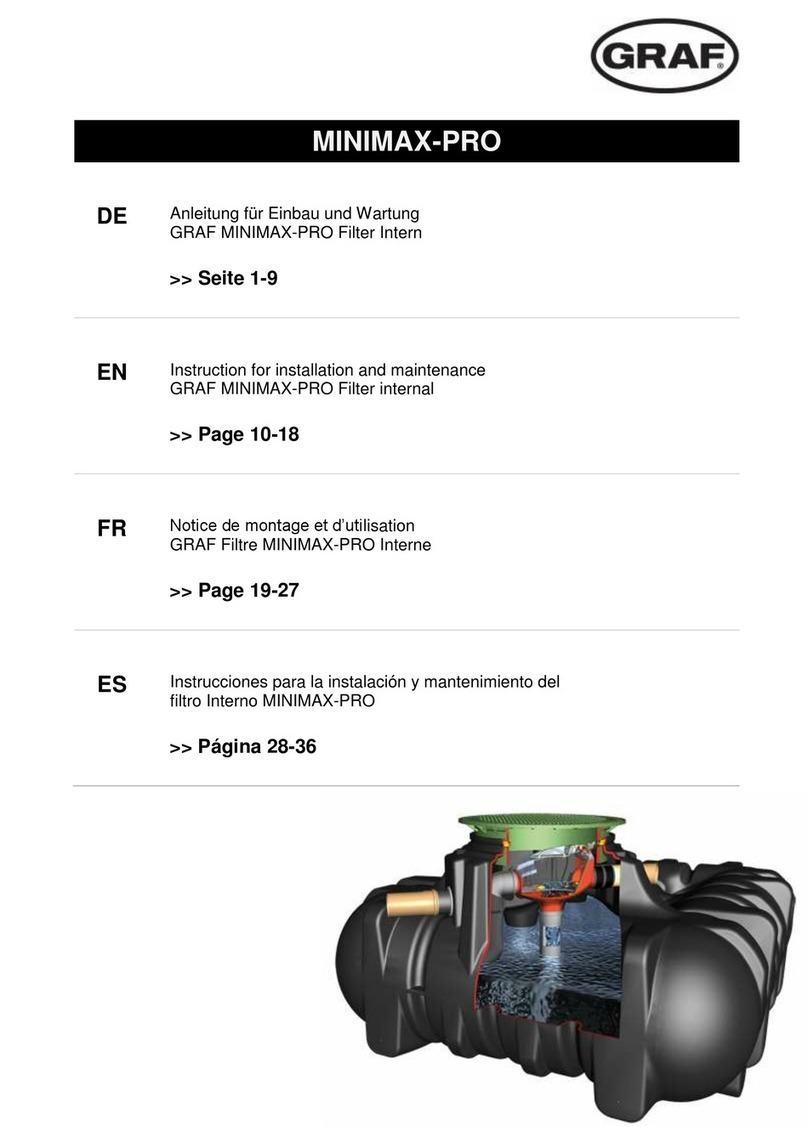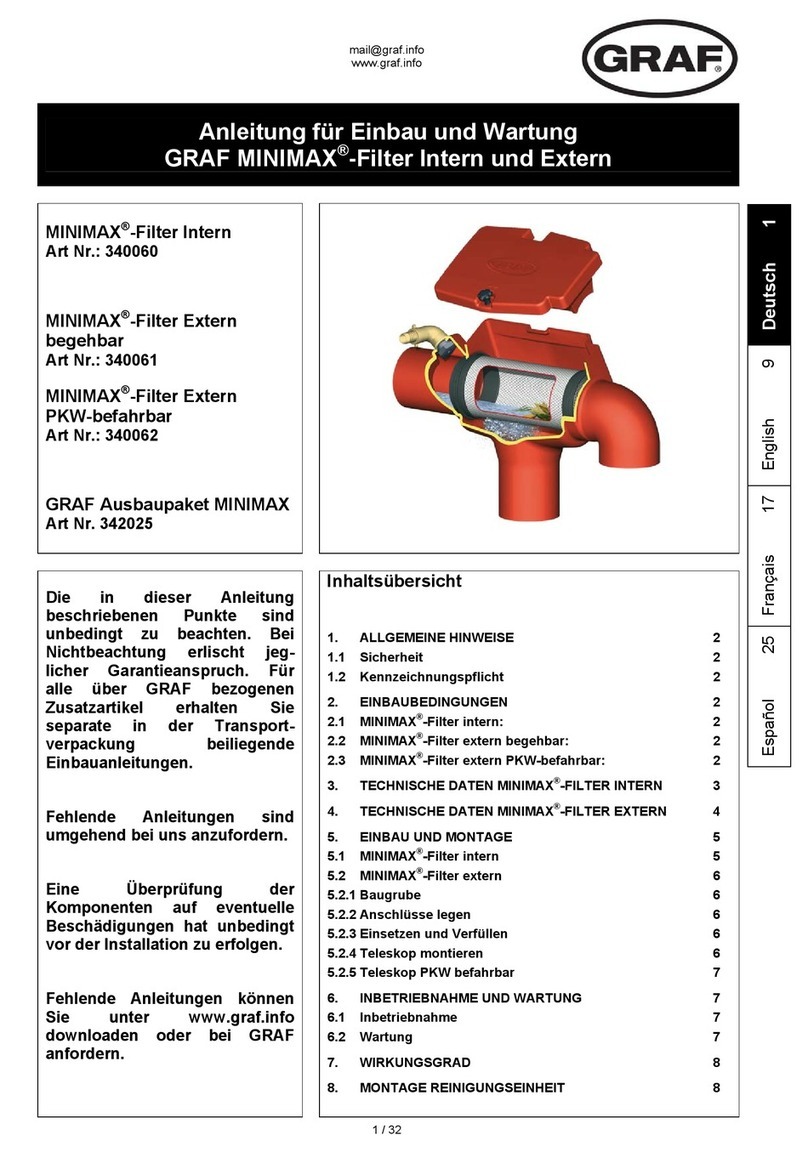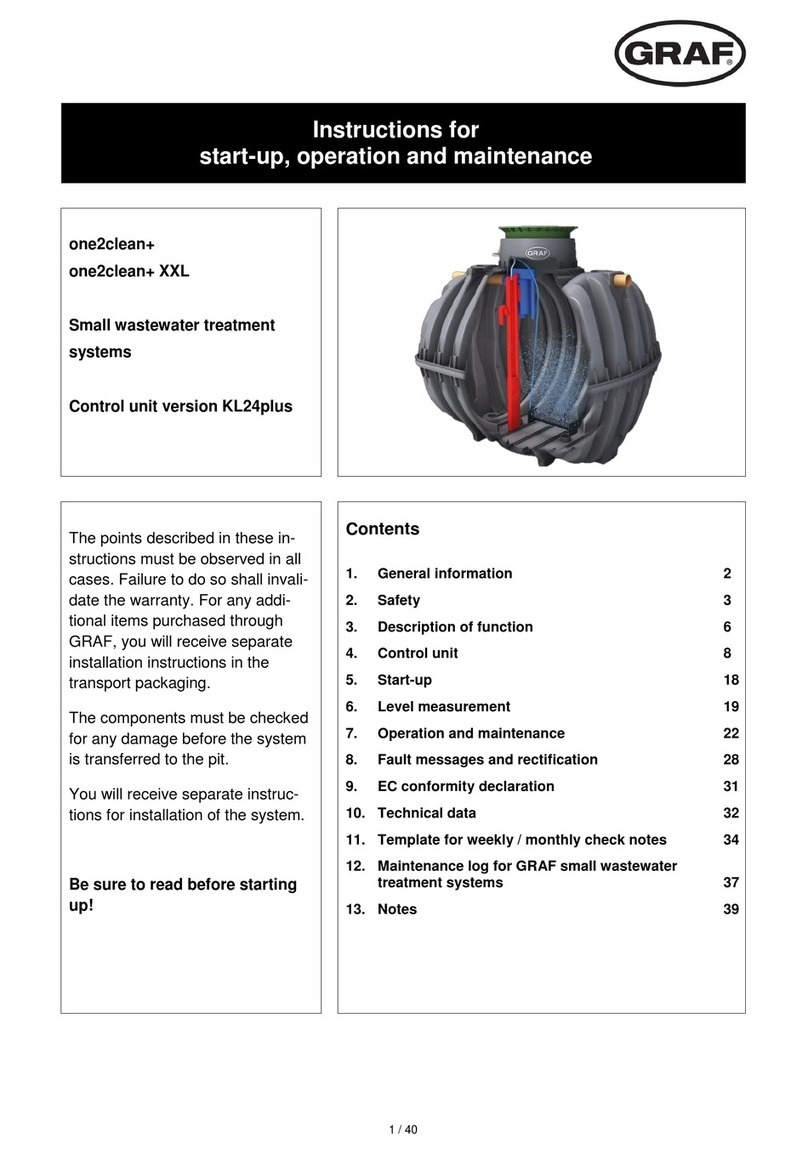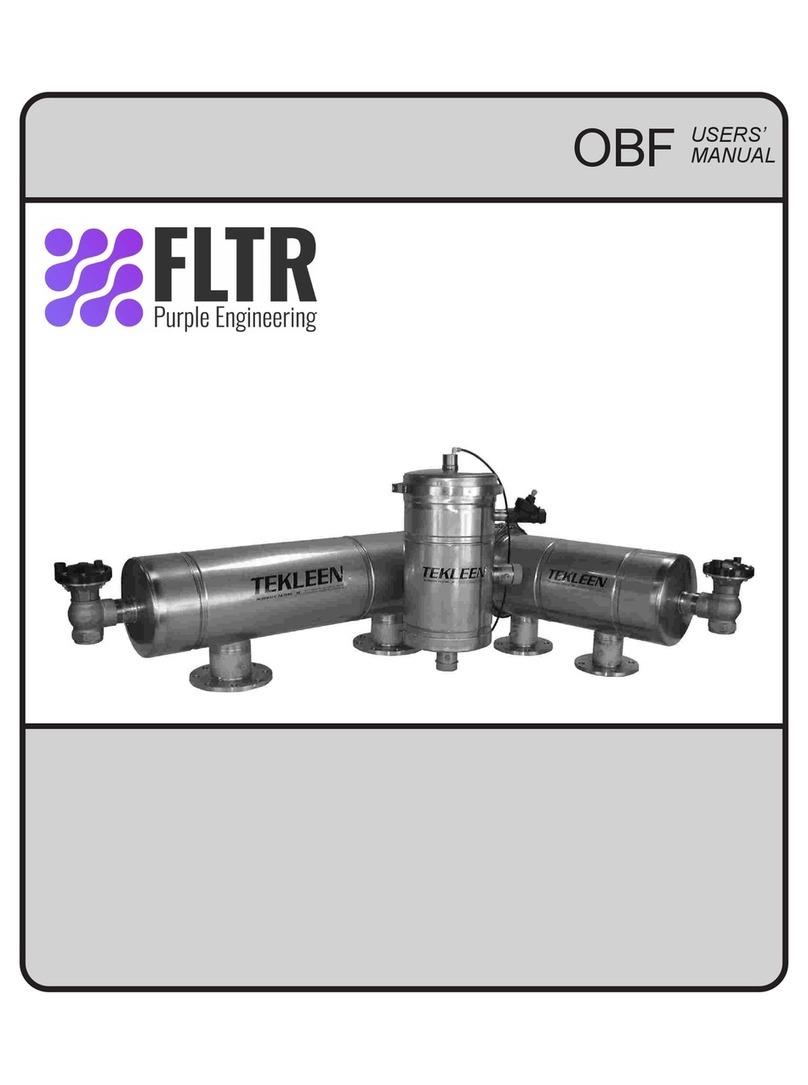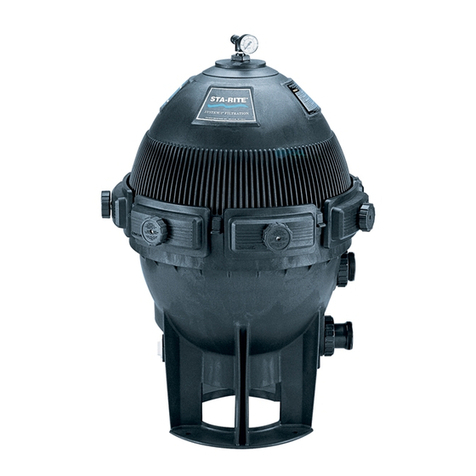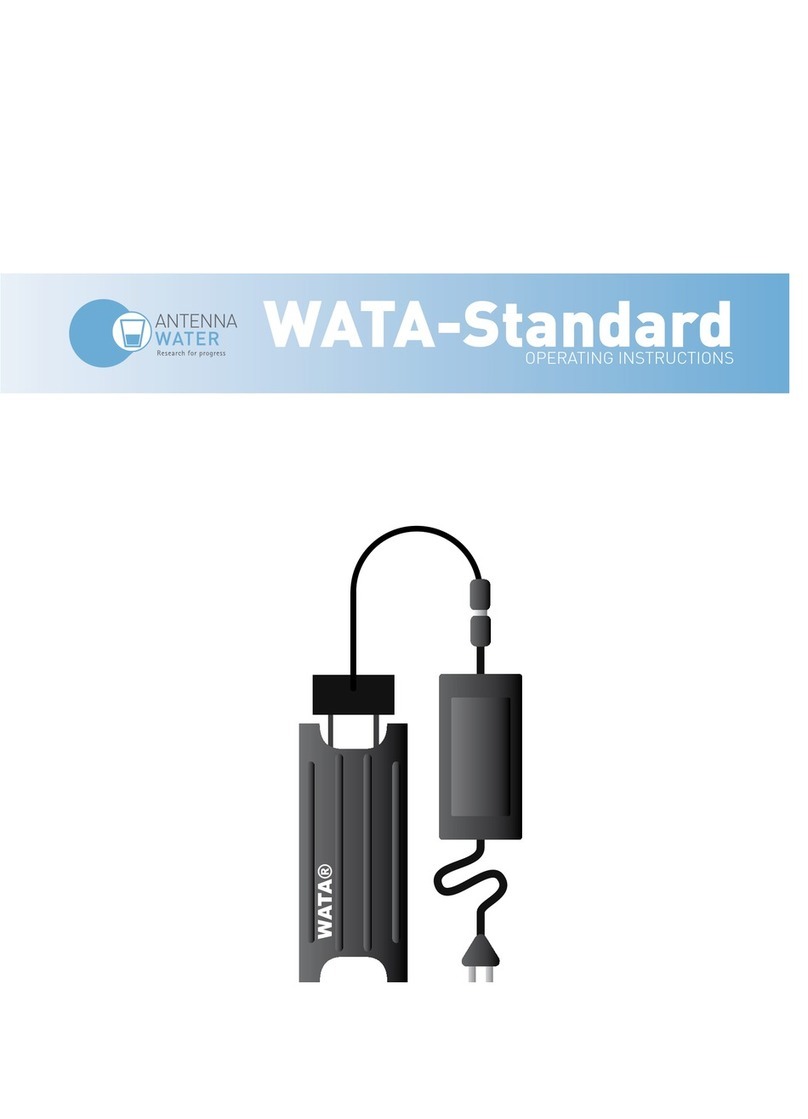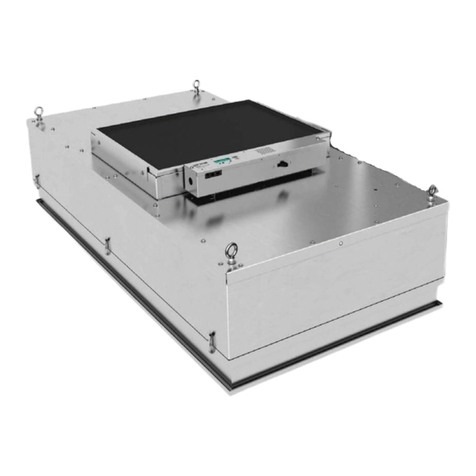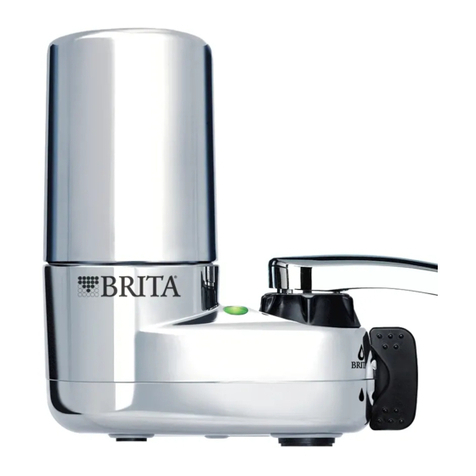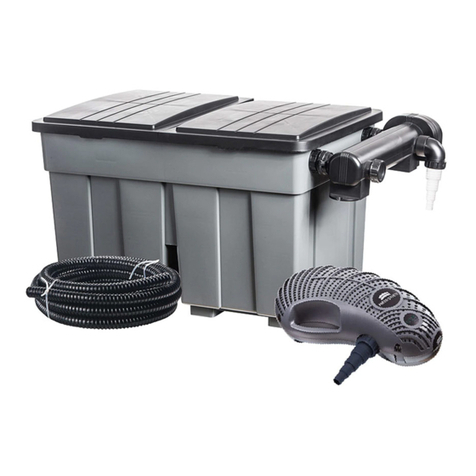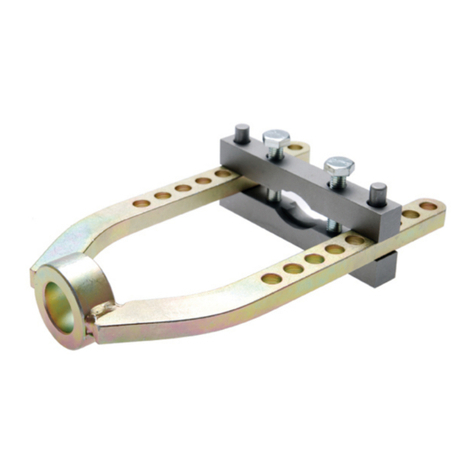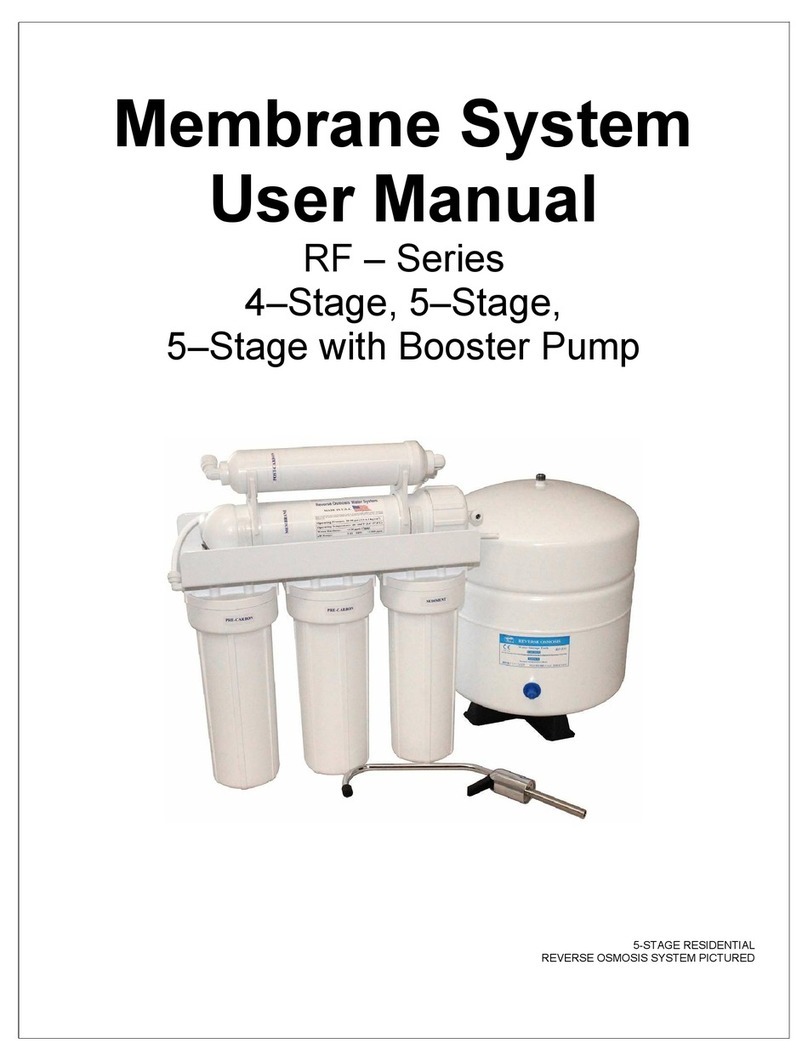
www.graf.info
6 / 26
5. Einbau und Montage Universal-Filter 3 extern
5.1 Vorbereitung Baugrube
Damit ausreichend Arbeitsraum vorhanden ist und der Filter gleichmäßig verdichtet werden kann, muss
die Grundfläche der Baugrube die Filtermaße auf jeder Seite um 50 cm überragen. Die Böschung ist
nach DIN 4124 anzulegen. Der Baugrund muss waagerecht und eben sein. Die Tiefe der Grube muss so
bemessen sein, dass die Einbautiefe bis Filtersohle maximal 1050 mm beträgt. Als Unterbau wird eine
Schicht verdichteter Rundkornkies (Körnung 8/16 nach DIN 4226 –1), Dicke ca. 10 cm, aufgetragen.
Wichtig: Die Standfläche für den Filter muss absolut waagerecht sein, um eine optimale Funktion zu
gewährleisten.
5.2 Einsetzen und Anschlüsse legen
Der Filter wird in die vorbereitete Grube eingesetzt und mit den entsprechenden Leitungen verbunden. Es
ist darauf zu achten, dass alle Leitungen mit einem Gefälle in Fliesrichtung von mind. 1% ohne Durchbie-
gungen verlegt werden. Der Notüberlauf muss angeschlossen werden, um einen Rückstau in die Zulei-
tung zu vermeiden.
Wichtig: DIN 1986 ist unbedingt zu beachten, d.h. Durchmesser Zulauf = Durchmesser Ablauf.
5.3 Teleskop montieren
5.3.1 Teleskop begehbar
Das Teleskop wird von oben in das Filtergehäuse ein-
geschoben. Bei Grubentiefen < 930 mm muss das
Teleskop und ggf. das Filtergehäuse gekürzt werden.
Es ist unbedingt darauf zu achten, dass die Zuleitung
im endgültig eingebauten Zustand nicht vom Teleskop
ganz oder teilweise verschlossen wird. Vor dem Ein-
schieben wird die Profildichtung in die Dichtnut des
Gehäuses eingesetzt. Das Teleskop, sowie die Dich-
tung müssen mit der mitgelieferten Schmierseife (kei-
ne Schmierstoffe auf Mineralölbasis verwenden) groß-
zügig eingerieben werden.
Achtung: Trocknet die Schmierseife an lässt sich das Teleskop nur noch sehr schwer bewegen und es
besteht die Gefahr, dass die Dichtung aus der Dichtnut rutscht. Vor dem Verfüllen muss die Dichtung auf
ihren korrekten Sitz überprüft werden. Das Teleskop muss ausreichend unterfüttert werden, so dass sich
Kräfte auf keinen Fall auf das Gehäuse übertragen können.
5.3.2 Teleskop PKW-befahrbar
Das Teleskop wie in Punkt 5.3.1 montieren. Um die PKW-Befahrbarkeit zu gewährleisten muss unter dem
Teleskopkragen mit Magerbeton unterfüttert werden. Die anzufüllende Betonschicht muss mind. 20 cm
breit und ca. 3 cm dick sein.
Achtung: Unbedingt die Stahl-Gussabdeckung verwenden. Verkehrslasten von LKW sind nicht zulässig.
Das Teleskop muss ausreichend unterfüttert werden, so dass sich Kräfte auf keinen Fall auf das Gehäu-
se übertragen können.
5.4 Verfüllen
Vor und während des Verfüllens muss die waagerechte Lage des Filters unbedingt kontrolliert werden.
Die Filterumhüllung wird mit Rundkornkies (Körnung 8/16 nach DIN 4226-1) in einer Breite von ca. 30 cm
lagenweise hergestellt. Die einzelnen Lagen werden in einer Höhe von 30 cm aufgetragen und anschlie-
ßend mit leichtem Verdichtungsgerät (Handstampfer o. ä.) verdichtet. Beim Verdichten ist eine Beschädi-
gung des Filtergehäuses zu vermeiden. Damit keine Kräfte auf das Filtergehäuse übertragen werden
muss das Teleskop gut unterfüttert und eingerüttelt werden. (bei PKW befahrenen Flächen Punkt 5.3.2
beachten) Anschließend wird der Deckel aufgesetzt und kindersicher verschlossen (Punkt 1.1 ist zu be-
achten). Die Verschraubung am Deckel ist so fest anzuziehen, dass sie von einem Kind nicht ge-
öffnet werden kann!
